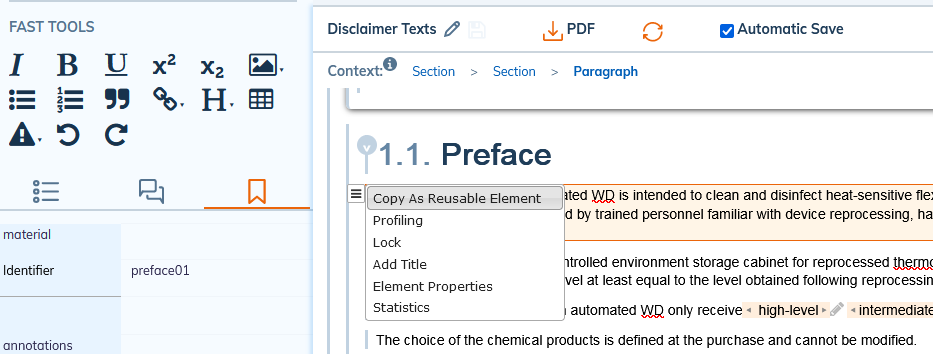5. To reuse
5.1. To modularize content
This feature allows you to externalize a structural element (section, chapter, part, etc.) of your document so that it can be reused in other documents.
Select the element to modularize;
Click :
either in the Context with a right click on the selected element;

either in the table of contents with a right click on the selected element.

A new file is created in Calenco with this element and its content, in the language of the current document.
Background color highlights the inclusion.
To modify a module, right-click on the inclusion and click .
5.2. To reuse contents
5.2.1. To reuse modules
Modules (Chapter, Section, Appendix, etc.) do not need to be identified to be reused.
There are several ways to reuse modules.
Procedure 30. Method 1
In the editor, select the module to reuse.
Click on then on .
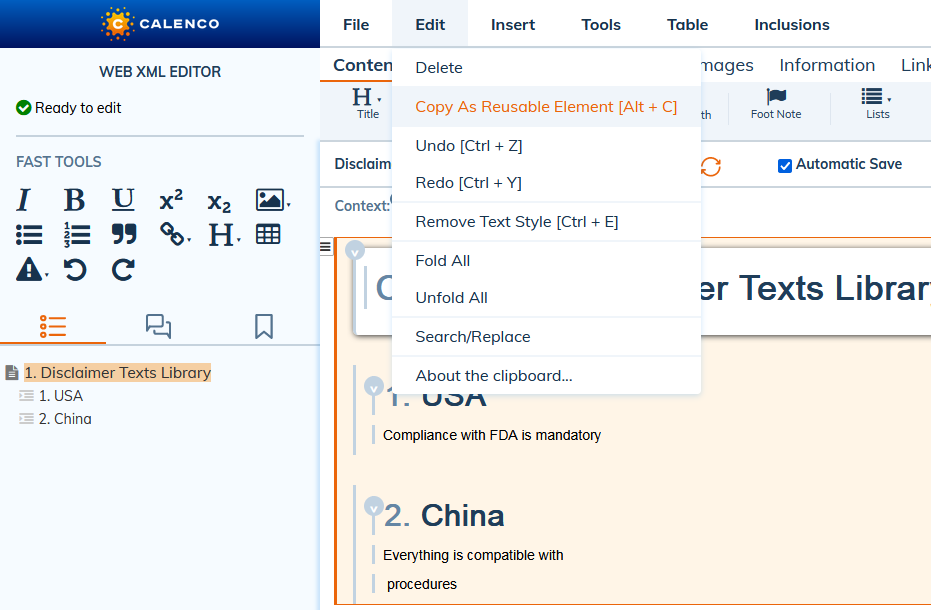
In the target document, indicate the insertion point and bring the inclusion with Ctrl+V.
Procedure 31. Method 2
In the editor, select the module to reuse.
In the Context, right click on the name of the selected element and click on .
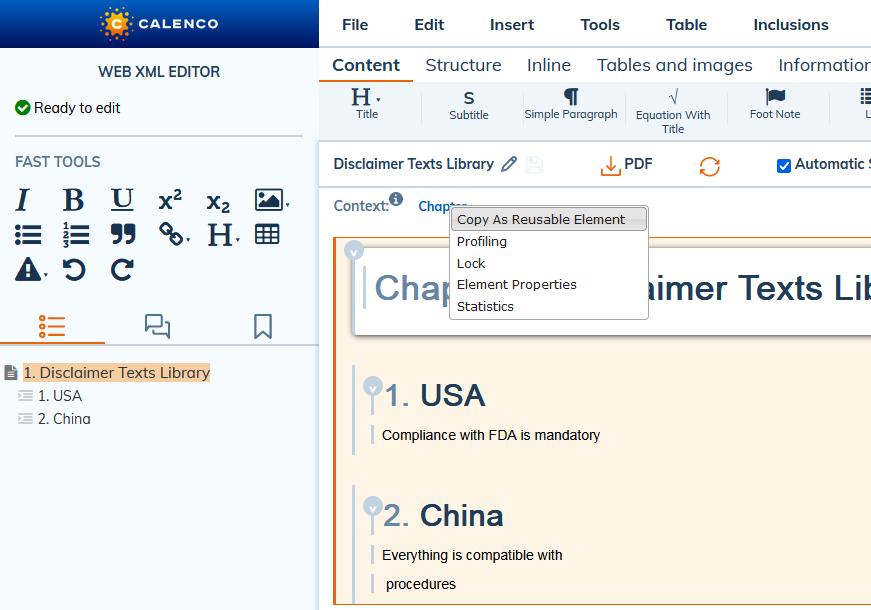
In the target document, indicate the insertion point and bring the inclusion with Ctrl+V.
Procedure 32. Method 3
In the target document, click
 in the upper-right corner of the editing area to select a module.
in the upper-right corner of the editing area to select a module.Select the desired module and click OK.
It is possible to filter files thanks to tags.
The drop-down menu Display allows showing name or label of files.
In a new window that opens, click on the element and indicate the insertion point.
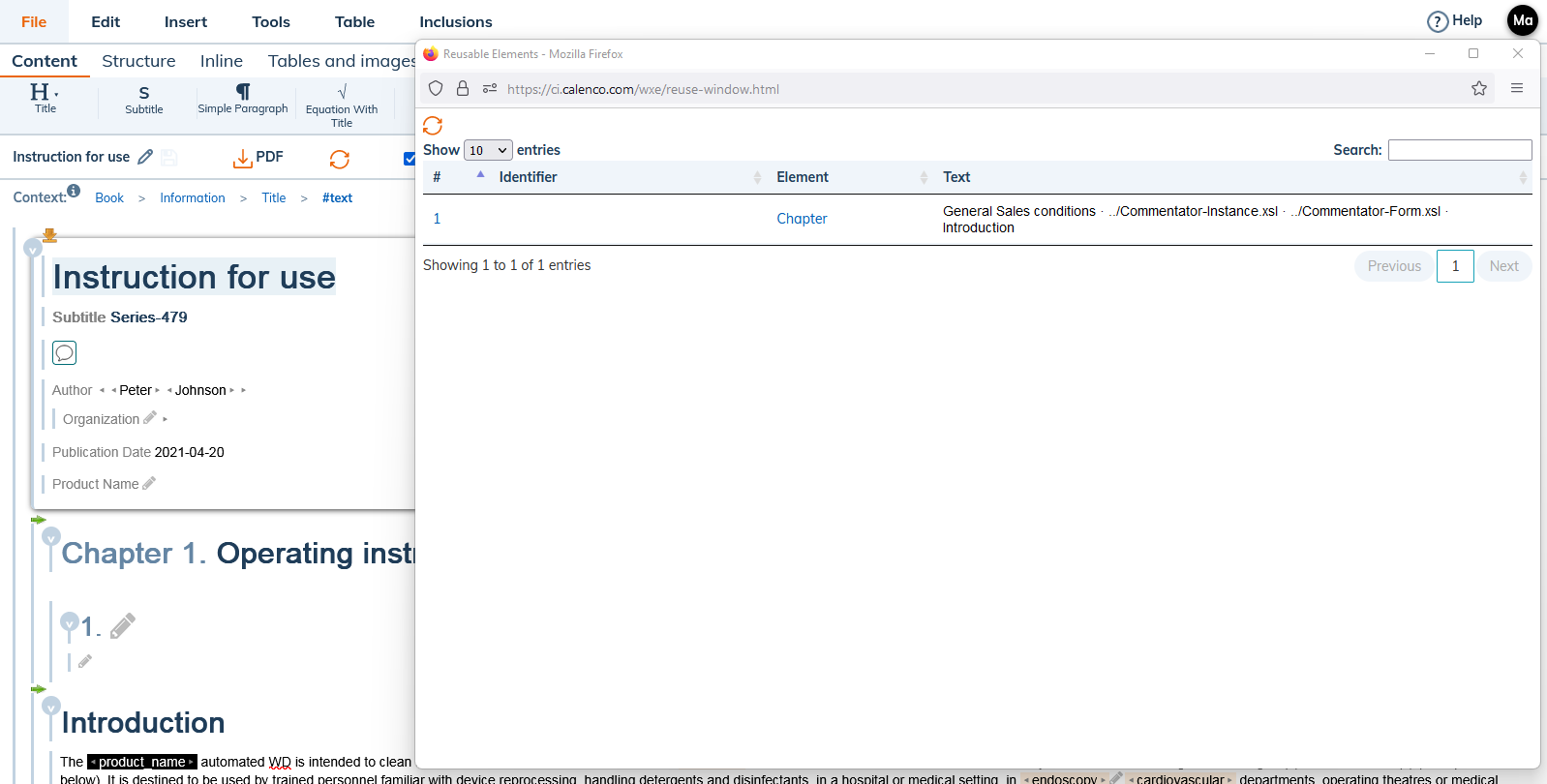
Insert the element using the arrow system Table 1, “Insert options”.
5.2.2. To reuse fragments
Elements as fragments of content (simple paragraph, image, table etc.) must be identified for reuse.
There are several methods of reusing fragments.
Procedure 33. Method 1
Make sure that the element to be reused is well identified (To identify). |
In the target document, click
 in the upper-right corner of the editing area to select a file containing reusable content.
in the upper-right corner of the editing area to select a file containing reusable content.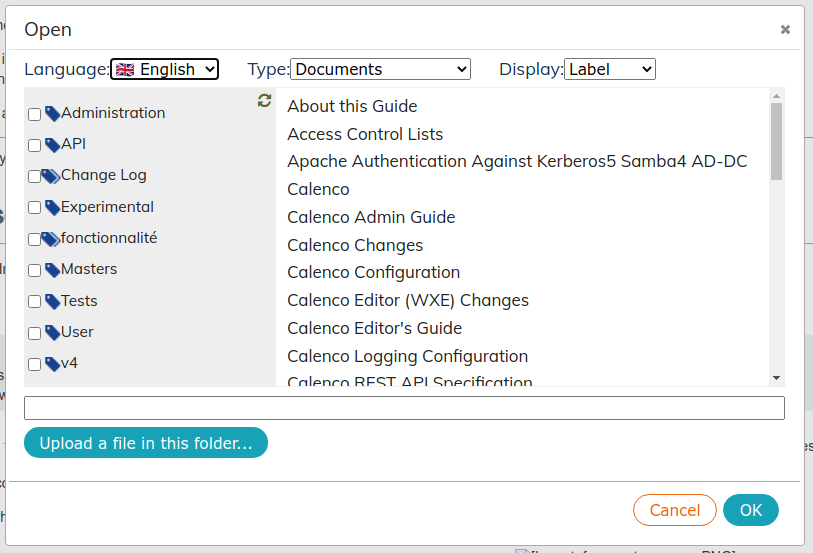
It is possible to filter files thanks to tags.
The drop-down menu Display allows showing name or label of files.
Select the file and click on OK. A new window appears:
If the file contains a lot of reusable elements, you can filter them.
Click the element and specify the insertion point. Insert the element using the arrow system Table 1, “Insert options”.

Click on to update the list of items.
5.3. Check for missing inclusions
Procedure 35. In the editor
When the document is opened, an Inclusion errors window appears with a list of missing inclusions:
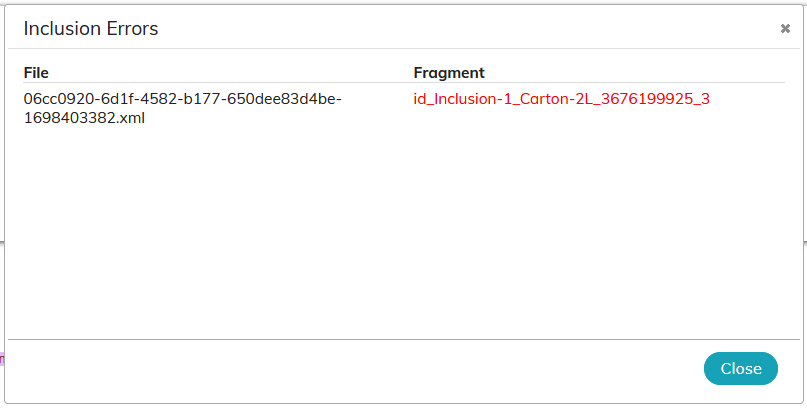
Missing inclusions from shared spaces are also taken into account.
Click on each row in the list to go to the relevant inclusion.
Click the source document label in the broken inclusion to open that document and analyze and fix the error.
Procedure 36. In the publication
Refer to To manage publications, the section Interpreting the Status of the Publication.
